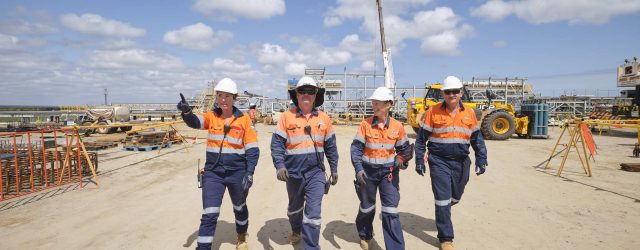Same, same but different inquiry
Posted: 1st July 2022
Posted in: Blog

Posted: 1st July 2022
Posted in: Blog
Productivity is once again the subject of a Federal Government review and, again, the real challenge is the actual adoption of better practice. Reflecting on the challenges to improving productivity, a consistent theme emerges—top-down government leadership. The role of government as a model client is critical if we are to cut waste, lower costs and address the ongoing lag in industry productivity.
Procurement
Massive productivity uplifts can be achieved by improving government procurement processes. Construction businesses spend substantial amounts of time and money bidding for projects in multi-tenderer processes. These processes are often lengthy and can involve detailed investigations to verify client provided information..
While some clients provide for reimbursement for some bid costs, the process amounts to wasted effort with entire bid teams tied up for months developing volumes of documentation and then waiting many weeks to find out if they have been successful. At a time where resources are scarce why, for example, ask tenderers for road projects to draft traffic management plans despite them being prequalified and known to be capable of producing such plans. These plans require hundreds of hours to produce and should not be necessary or, as a minimum, only made a requirement for the preferred tenderer.
The industry needs to stop running lengthy procurement processes that offer no material benefit other than to give the illusion that a client is obtaining value for money.
Contracts
Contracts present another opportunity to reduce waste while also setting the groundwork for happier industry participants. Greater use of standard contract templates is one way; however, arguably the bigger issue is risk allocation. Time and time again we see difficult or impossible to price risk passed to the head contractor and then onto the supply network. The mantra of ‘the party best able to manage the risk should bear the risk’ is premised on the false notion that being able to manage a risk, for example by having the expertise and site presence, equates to being able to bear the cost of the risk.
Inappropriate risk allocations impact productivity in several ways. Time and resources are wasted on disputes and claims to avoid substantial losses, open and transparent sharing of information is inhibited—which is a necessary precursor for digital engineering—and the wellbeing of the workforce is negatively impacted through the stress of it all.
Prescription
On the topic of contracts, prescriptive specifications are commonly included which restrict contractors from innovating and providing new solutions. Outcomes-based specifications, however, promote innovative solutions including those supporting environmentally sustainable outcomes.
Taking this a step further, tenders commonly have prescriptive requirements for project team members. For example, some tenders require a set number of years’ experience and qualifications. This level of prescription inhibits the development of agile and diverse project teams.
Culture
Cultural issues across the construction industry are negatively impacting productivity and costing the economy billions. The Cost of Doing Nothing report calculates nearly $8 billion annually due to workplace injuries, mental illness, suicide, long work hours and a lack of diversity.
The industry suffers from a lack of mutual trust and understanding between industry participants and a reluctance to share lessons learned and best practice. The industry and its customers and partners need to work together to make lasting cultural change. There is an enormous opportunity for clients to support a cultural shift through procurement processes by committing to buy construction services that meet the new Culture Standard currently being trialled across NSW and Victoria.
If we make cultural change happen there will be a positive return to the economy through better productivity, economic and social outcomes.
Digital engineering
Digital tools enable productivity improvements through the life of an asset. However, the current approach of expecting construction contractors to be responsible for implementing digital approaches at their own initiative and cost is not working as the benefits are largely for the asset owner and over the life of the asset. This is why despite Building Information Modelling (BIM) being around for 30 years we still get excited when we see a 3D model on a computer screen!
In a competitive ,market with slim margins where the investment in digital engineering tools is not fully realised until the operational phase, digital tools will not be fully adopted during the construction phase unless it is included and costed in the tender requirements. Whole-of-life costing of assets is also a factor in achieving this, and redefining value beyond the up-front price at the tender box for the construction.
Another key aspect is data management. Effectively collecting and managing data can improve all aspects of project delivery and operation of assets. When different asset owners have different system requirements and/or no clear requirement for collection and management of data on a project, data is not utilised efficiently or effectively.
FAIR future for construction
The industry’s challenges are well understood, and most are linked to productivity. Infrastructure Australia has produced well-research and considered plans for reform that align with calls from industry and reports prepared for state governments. Yet despite almost universal alignment on the problems and the cure, there is currently no mechanism to ensure that the necessary reforms are implemented.
The Australian Constructors Association has developed such a mechanism—FAIR. The Australian Infrastructure Rating (FAIR) enables the Federal Government, as the bank roller of major projects, to drive consistent and widespread change across jurisdictions. It is designed to measure the performance of federally funded infrastructure projects against key reform areas such as productivity improvements, emissions reductions, increased participation of women in the industry, improved worker health and wellbeing, increased sovereign capability, skills development and increased innovation.
The single purpose of FAIR is to improve the sustainability and performance of the industry. It is now over to the Federal Government to implement FAIR to achieve much needed reform.